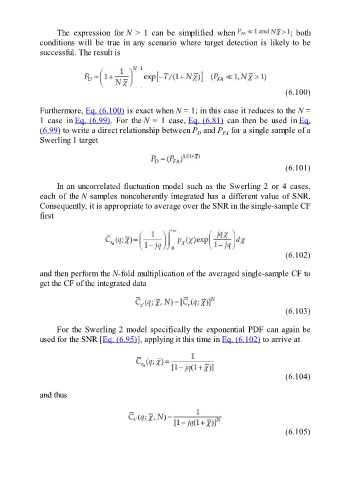Page 486 - Fundamentals of Radar Signal Processing
P. 486
The expression for N > 1 can be simplified when ; both
conditions will be true in any scenario where target detection is likely to be
successful. The result is
(6.100)
Furthermore, Eq. (6.100) is exact when N = 1; in this case it reduces to the N =
1 case in Eq. (6.99). For the N = 1 case, Eq. (6.81) can then be used in Eq.
(6.99) to write a direct relationship between P and P for a single sample of a
D
FA
Swerling 1 target
(6.101)
In an uncorrelated fluctuation model such as the Swerling 2 or 4 cases,
each of the N samples noncoherently integrated has a different value of SNR.
Consequently, it is appropriate to average over the SNR in the single-sample CF
first
(6.102)
and then perform the N-fold multiplication of the averaged single-sample CF to
get the CF of the integrated data
(6.103)
For the Swerling 2 model specifically the exponential PDF can again be
used for the SNR [Eq. (6.95)], applying it this time in Eq. (6.102) to arrive at
(6.104)
and thus
(6.105)

